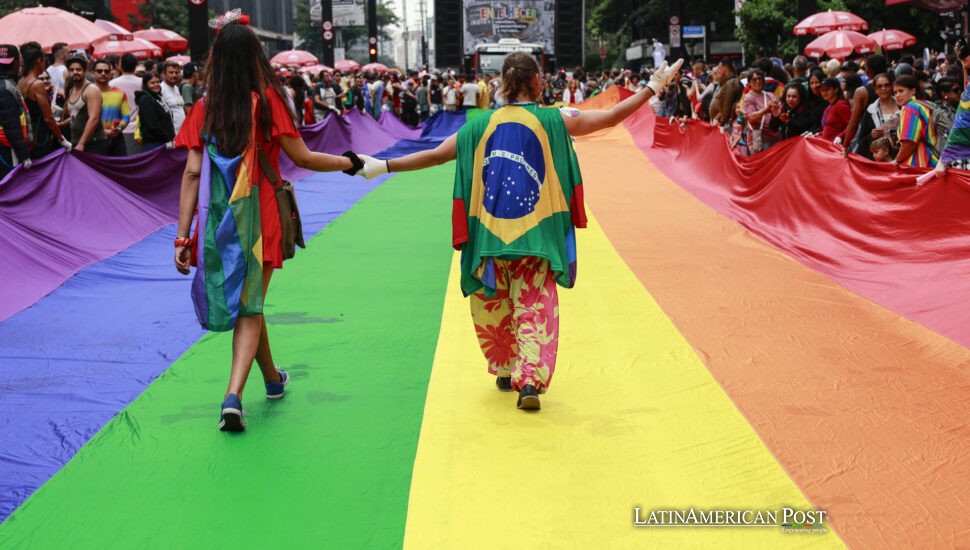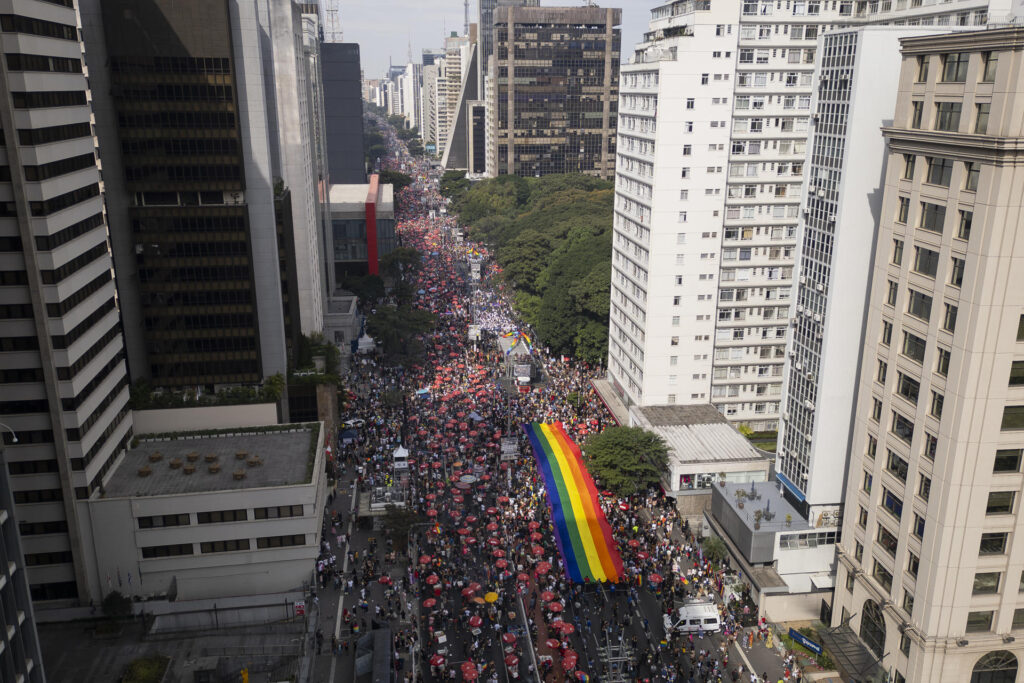Glitter Endures as Brazil’s Paulista Parade Salutes Queer Elders’ Fight

A deafening flutter of rainbow fans turned São Paulo’s Avenida Paulista into a living archive of struggle on Sunday. The city’s 29th Pride March honored aging LGBTQ+ Brazilians who resisted dictatorship, AIDS, and prejudice so today’s youth could dance freely.
Feathers, Basslines, and the Burden of Memory
It began with a roar and the rustle of fans cracking open like exclamations. From atop a towering trio, elétrico, a drag queen in sequins, shouted, “We embrace a past of struggle and celebrate a future of love!” The reply was a wave of cheers, the distinctive snap of rainbow fans slicing the air, and the unofficial sound of São Paulo Pride.
But this year’s march carried a quiet revolution beneath the glitter and celebration. Elder voices were at the center for the first time in its 29-year history.
“We older LGBT+ people have resisted everything—prejudice, violence, AIDS, even censorship,” said Aurimar Barbosa da Silva, 61, seated hours early along the curb, her folding chair planted like a flag. She smiled at the theme: “Ageing LGBT+: Memory, Resistance, and Future,” but wondered aloud why it took nearly three decades to say it out loud.
Historian James Green of the Universidade Estadual de Campinas has traced how São Paulo’s earliest gay gatherings in the 1960s had to hide behind euphemisms and mimeographed newsletters. Half a century later, those who once whispered in private now stood beneath rainbow banners, drenched in sunlight and confetti.
When Age Becomes a Closet
Not all battles are won in the streets. Some are fought quietly, behind care-home doors, or inside aging bodies that society no longer sees.
At 72, Dora Cudgnola refuses to vanish.
She still remembers the day she first kissed her wife in public—at her wife’s funeral. “I was terrified of what the neighbors would say,” she told EFE, voice cracking over the phone. “After her stroke, I promised never to feel shame again.”
Today, she runs Eternamente Sou, an NGO that offers workshops on queer aging, love, and desire in later life. She talks frankly about sexuality—about wrinkled skin and sagging breasts, about pleasure that doesn’t fade with youth. “We must show we are happy in these bodies,” she said. “Young people need to see where their freedom comes from.”
Studies from the Federal University of Minas Gerais confirm the stakes: queer Brazilians often feel pressure to “return to the closet” when they enter elder care, fearing ridicule or isolation. Sociologist Larissa Pelúcio argues that in a culture obsessed with youthful beauty, simply existing visibly as an older LGBTQ+ person is an act of political resistance.
On Sunday, that resistance wasn’t quiet. It was loud, glittered, and standing shoulder to shoulder with the future.

A Carnival of Joy—and Unequal Realities
By mid-afternoon, the celebration was in full swing. The Avenida throbbed with joy. Trapeze artists twisted above the crowds in silks. Ludmilla, Brazil’s pop powerhouse, had the entire street bouncing. From above, it looked like a river of color and sound.
City Hall estimated that three million people filled the avenue. Foundação Getulio Vargas calls Pride São Paulo’s “most lucrative single-day event outside Carnival.” Bakeries stocked rainbow brigadeiros. Hotels buzzed in Portuguese and Spanish with tourists from Chile, Argentina, and Paraguay.
But the vibrant spectacle didn’t erase the struggle.
A University of Brasília study from 2023 found that queer Brazilians over 60 are twice as likely to rely only on state pensions than their straight counterparts. Many lost jobs to discrimination or were cut out of inheritance by estranged families. The celebration on Sunday was also a protest. Activists led chants demanding public housing, LGBTQ+ training for eldercare workers, and full dignity in old age.
They shouted: “Não ao armário geriátrico!“
No to the geriatric closet.
Because not every closet has a door, you choose to close. Some are built around you.
Legacy Carried on Glittered Shoulders
In a gold lamé bodysuit, 54-year-old drag queen Dindry Buck stood like a monument. “Twenty-nine years of drag,” she told EFE. “But before me came people who opened the road—who died, who fought—before this movement even had a name.”
The past was everywhere on Sunday. You could see it in the sashes reading “Stonewall—50 years,” in the banners bearing the faces of the dead: Marielle Franco, the Black lesbian councilor assassinated in 2018, paired with Valéria Alpiste, the trans activist who helped lead the city’s very first Pride in 1997.
A younger crowd paused their selfies to wrap arms around elders wearing T-shirts with slogans like “You can’t cancel someone who survived the dictatorship.”
As the sun dipped, organizers turned a nearby building into a screen. It lit up with black-and-white photos of 1970s house parties, passport portraits of trans pioneers, and snapshots of long-hidden couples finally allowed to marry after Brazil’s 2013 ruling.
Also Read: Official Spanish Version of U.S. Anthem Resurfaces During Dodger Stadium Dissent
Each image drew fresh cheers. And always—those fans, flicking open in unison. Crack-crack. Like applause. Like a heartbeat. Like a vow.
Somewhere in that sea of sound, Dora Cudgnola exhaled.
“I’m old, yes,” she had said earlier. “But I am also tomorrow.”





